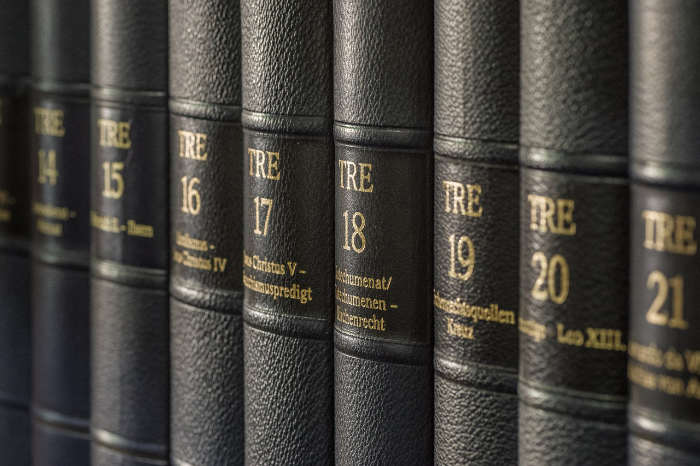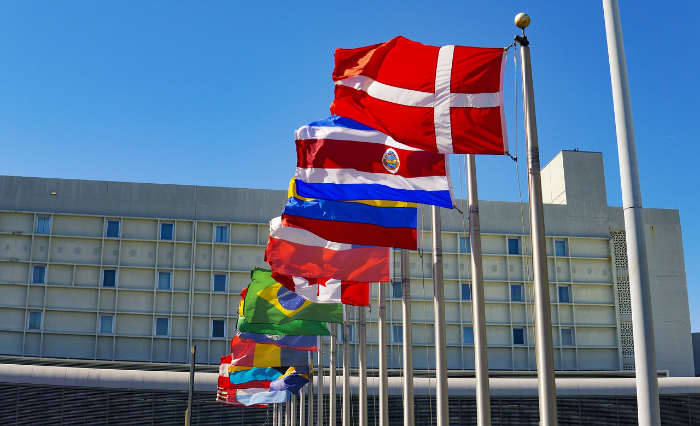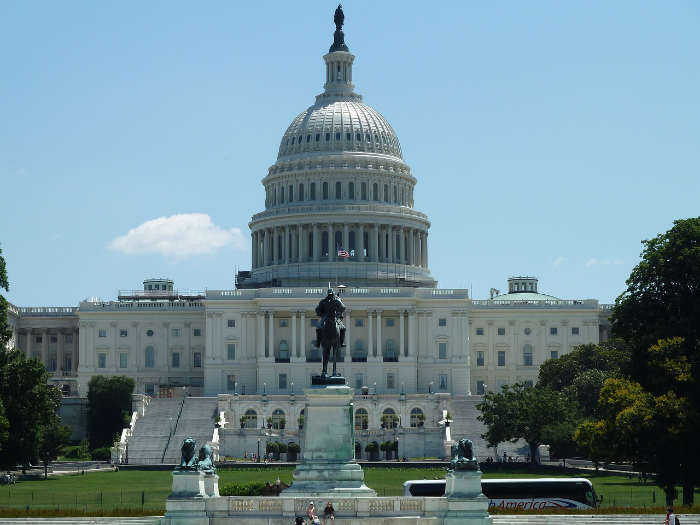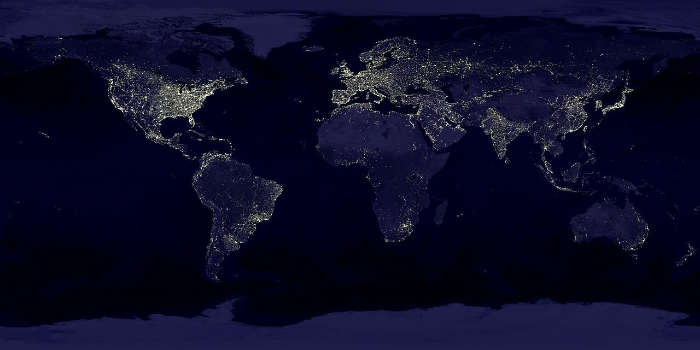Alcoholism by Country 2025

0
500
1,000
1,500
2,000
2,500
3,000
3,500
4,000
4,500
5,000
4,818 per 100k
4,494 per 100k
4,379 per 100k
4,100 per 100k
3,996 per 100k
Country | Alcoholism Rate 2021 (per 100k)↓ | Alcoholism Rate Male 2021 (per 100k) | Alcoholism Rate Female 2021 (per 100k) | |
|---|---|---|---|---|
| Mongolia | 4,818 | 7,887 | 1,827 | |
| Belarus | 4,494 | 6,876 | 2,418 | |
| Russia | 4,379 | 6,518 | 2,514 | |
| Kazakhstan | 4,100 | 6,525 | 1,818 | |
| Greenland | 3,996 | 4,877 | 3,021 | |
| Poland | 3,939 | 4,892 | 3,045 | |
| El Salvador | 3,894 | 7,231 | 951 | |
| Saint Kitts and Nevis | 3,891 | 5,621 | 2,163 | |
| Guatemala | 3,833 | 6,611 | 1,223 | |
| New Zealand | 3,626 | 4,882 | 2,374 | |
| Slovenia | 3,599 | 4,482 | 2,727 | |
| Ukraine | 3,583 | 5,696 | 1,758 | |
| Latvia | 3,397 | 5,417 | 1,673 | |
| Denmark | 3,380 | 5,140 | 1,633 | |
| Portugal | 3,300 | 6,221 | 658 | |
| Ireland | 3,227 | 4,615 | 1,869 | |
| Lithuania | 3,129 | 5,037 | 1,498 | |
| Kyrgyzstan | 3,125 | 4,992 | 1,305 | |
| Moldova | 3,112 | 4,856 | 1,527 | |
| United Kingdom | 3,076 | 4,862 | 1,355 | |
| United States Virgin Islands | 3,062 | 4,898 | 1,332 | |
| Austria | 3,055 | 4,671 | 1,482 | |
| South Korea | 3,033 | 4,776 | 1,276 | |
| Croatia | 2,962 | 3,716 | 2,251 | |
| Turkmenistan | 2,936 | 4,399 | 1,407 | |
| Paraguay | 2,930 | 4,474 | 1,355 | |
| Czechia | 2,926 | 3,420 | 2,447 | |
| Hungary | 2,916 | 3,512 | 2,373 | |
| Luxembourg | 2,866 | 4,223 | 1,489 | |
| Estonia | 2,865 | 4,385 | 1,507 | |
| Brazil | 2,864 | 4,292 | 1,503 | |
| Chile | 2,862 | 3,840 | 1,915 | |
| Slovakia | 2,858 | 3,473 | 2,271 | |
| Antigua and Barbuda | 2,806 | 4,134 | 1,530 | |
| Nicaragua | 2,804 | 4,856 | 803 | |
| Belgium | 2,709 | 4,304 | 1,161 | |
| Switzerland | 2,649 | 4,033 | 1,272 | |
| Azerbaijan | 2,647 | 4,041 | 1,246 | |
| Serbia | 2,585 | 3,255 | 1,918 | |
| Finland | 2,521 | 3,556 | 1,510 | |
| Saint Lucia | 2,513 | 3,484 | 1,543 | |
| Dominica | 2,482 | 3,460 | 1,471 | |
| Armenia | 2,475 | 3,810 | 1,234 | |
| Romania | 2,466 | 2,984 | 1,977 | |
| Saint Vincent and the Grenadines | 2,451 | 3,753 | 1,093 | |
| Colombia | 2,443 | 3,795 | 1,143 | |
| Bhutan | 2,415 | 4,100 | 601 | |
| Bahamas | 2,401 | 3,480 | 1,394 | |
| Germany | 2,370 | 3,527 | 1,221 | |
| Rwanda | 2,359 | 4,247 | 569 | |
| United States | 2,354 | 3,034 | 1,698 | |
| France | 2,338 | 3,439 | 1,303 | |
| Botswana | 2,272 | 4,007 | 579 | |
| Sweden | 2,265 | 3,361 | 1,155 | |
| Bosnia and Herzegovina | 2,239 | 2,799 | 1,705 | |
| Costa Rica | 2,225 | 3,670 | 875 | |
| Iceland | 2,216 | 3,379 | 1,023 | |
| Georgia | 2,214 | 3,468 | 1,059 | |
| Honduras | 2,195 | 3,726 | 748 | |
| Andorra | 2,131 | 3,298 | 895 | |
| Argentina | 2,114 | 3,041 | 1,231 | |
| Bulgaria | 2,087 | 2,434 | 1,761 | |
| South Africa | 2,084 | 3,664 | 566 | |
| Grenada | 2,084 | 3,060 | 1,059 | |
| Cuba | 2,067 | 3,249 | 900 | |
| Puerto Rico | 2,056 | 3,115 | 1,099 | |
| Lesotho | 2,000 | 3,540 | 547 | |
| Australia | 1,997 | 2,674 | 1,336 | |
| Tajikistan | 1,997 | 3,001 | 965 | |
| Namibia | 1,991 | 3,561 | 514 | |
| Guyana | 1,978 | 2,768 | 1,210 | |
| Montenegro | 1,972 | 2,075 | 1,872 | |
| Canada | 1,901 | 2,571 | 1,248 | |
| Trinidad and Tobago | 1,869 | 2,702 | 1,034 | |
| Eswatini | 1,868 | 3,292 | 498 | |
| Netherlands | 1,844 | 3,059 | 645 | |
| Suriname | 1,808 | 2,678 | 961 | |
| Barbados | 1,797 | 2,736 | 923 | |
| Cyprus | 1,788 | 2,675 | 925 | |
| Belize | 1,773 | 2,669 | 888 | |
| Uzbekistan | 1,766 | 2,509 | 1,025 | |
| Panama | 1,766 | 2,809 | 706 | |
| Ethiopia | 1,745 | 3,022 | 447 | |
| Haiti | 1,741 | 2,345 | 1,160 | |
| Mauritius | 1,734 | 2,946 | 554 | |
| Bermuda | 1,712 | 2,558 | 920 | |
| Albania | 1,695 | 1,729 | 1,660 | |
| Venezuela | 1,691 | 2,757 | 694 | |
| Uruguay | 1,682 | 2,588 | 848 | |
| Malta | 1,654 | 2,483 | 825 | |
| Norway | 1,653 | 2,503 | 786 | |
| Spain | 1,610 | 2,521 | 739 | |
| Italy | 1,598 | 2,083 | 1,139 | |
| San Marino | 1,585 | 2,357 | 862 | |
| Dominican Republic | 1,560 | 2,272 | 841 | |
| Mexico | 1,550 | 2,611 | 539 | |
| Monaco | 1,542 | 2,321 | 806 | |
| Greece | 1,527 | 2,272 | 822 | |
| Pakistan | 1,508 | 2,702 | 257 | |
| North Macedonia | 1,404 | 2,220 | 1,737 | |
| Northern Mariana Islands | 1,404 | 2,336 | 372 | |
| China | 1,366 | 2,257 | 431 | |
| Zimbabwe | 1,359 | 2,384 | 409 | |
| Bolivia | 1,352 | 1,821 | 883 | |
| Djibouti | 1,289 | 2,013 | 442 | |
| Vietnam | 1,267 | 2,203 | 337 | |
| Jamaica | 1,247 | 1,635 | 865 | |
| Ecuador | 1,246 | 1,767 | 732 | |
| Thailand | 1,245 | 2,226 | 330 | |
| India | 1,206 | 2,005 | 368 | |
| Eritrea | 1,178 | 1,901 | 433 | |
| Bangladesh | 1,166 | 2,076 | 285 | |
| Cook Islands | 1,141 | 1,915 | 409 | |
| Nepal | 1,137 | 2,265 | 113 | |
| Comoros | 1,106 | 1,765 | 450 | |
| Zambia | 1,080 | 1,771 | 402 | |
| Peru | 1,066 | 1,376 | 752 | |
| Gabon | 1,011 | 1,555 | 507 | |
| Burundi | 1,007 | 1,632 | 379 | |
| Republic of the Congo | 998 | 1,445 | 556 | |
| Sri Lanka | 996 | 1,680 | 359 | |
| Marshall Islands | 993 | 1,572 | 386 | |
| Tanzania | 988 | 1,606 | 404 | |
| Malawi | 986 | 1,625 | 379 | |
| Mozambique | 977 | 1,628 | 373 | |
| Madagascar | 971 | 1,569 | 388 | |
| Brunei | 970 | 1,337 | 560 | |
| Micronesia | 953 | 1,518 | 366 | |
| Solomon Islands | 953 | 1,489 | 395 | |
| Palau | 948 | 1,385 | 413 | |
| Nauru | 940 | 1,506 | 364 | |
| Tuvalu | 923 | 1,448 | 352 | |
| Guam | 921 | 1,470 | 357 | |
| Maldives | 917 | 1,284 | 328 | |
| Niue | 913 | 1,454 | 365 | |
| Laos | 912 | 1,477 | 340 | |
| Seychelles | 895 | 1,406 | 326 | |
| Central African Republic | 875 | 1,266 | 498 | |
| Equatorial Guinea | 860 | 1,176 | 485 | |
| South Sudan | 847 | 1,341 | 351 | |
| Philippines | 847 | 1,357 | 322 | |
| North Korea | 845 | 1,360 | 337 | |
| Somalia | 838 | 1,326 | 326 | |
| American Samoa | 829 | 1,324 | 311 | |
| Tokelau | 819 | 1,255 | 366 | |
| Cambodia | 815 | 1,319 | 329 | |
| Singapore | 799 | 1,072 | 517 | |
| Vanuatu | 797 | 1,259 | 327 | |
| DR Congo | 794 | 1,149 | 432 | |
| United Arab Emirates | 791 | 1,001 | 248 | |
| Myanmar | 780 | 1,276 | 319 | |
| Papua New Guinea | 764 | 1,175 | 321 | |
| Angola | 762 | 1,113 | 432 | |
| Samoa | 747 | 1,156 | 314 | |
| Israel | 742 | 974 | 511 | |
| Taiwan | 709 | 1,151 | 276 | |
| Tonga | 668 | 1,040 | 298 | |
| Kiribati | 646 | 973 | 332 | |
| Timor-Leste | 634 | 987 | 274 | |
| Fiji | 617 | 905 | 321 | |
| Qatar | 611 | 765 | 242 | |
| Uganda | 608 | 939 | 285 | |
| Malaysia | 577 | 810 | 327 | |
| Bahrain | 540 | 723 | 229 | |
| Japan | 530 | 711 | 359 | |
| Kenya | 525 | 645 | 407 | |
| Indonesia | 523 | 748 | 292 | |
| Saudi Arabia | 518 | 713 | 243 | |
| Cape Verde | 517 | 582 | 450 | |
| Oman | 481 | 646 | 218 | |
| Sao Tome and Principe | 469 | 576 | 362 | |
| Kuwait | 466 | 654 | 256 | |
| Turkey | 458 | 704 | 210 | |
| Libya | 446 | 641 | 238 | |
| Ghana | 445 | 490 | 403 | |
| Ivory Coast | 428 | 483 | 369 | |
| Lebanon | 428 | 619 | 237 | |
| Togo | 412 | 444 | 381 | |
| Guinea-Bissau | 411 | 441 | 382 | |
| Liberia | 410 | 446 | 373 | |
| Cameroon | 410 | 448 | 372 | |
| Tunisia | 405 | 583 | 229 | |
| Sierra Leone | 404 | 434 | 375 | |
| Gambia | 393 | 426 | 361 | |
| Burkina Faso | 391 | 421 | 363 | |
| Morocco | 389 | 554 | 223 | |
| Algeria | 385 | 548 | 217 | |
| Senegal | 383 | 414 | 352 | |
| Guinea | 377 | 400 | 356 | |
| Benin | 370 | 393 | 348 | |
| Jordan | 370 | 512 | 206 | |
| Iran | 369 | 499 | 234 | |
| Syria | 367 | 529 | 217 | |
| Nigeria | 356 | 380 | 334 | |
| Iraq | 355 | 497 | 202 | |
| Mauritania | 341 | 356 | 326 | |
| Egypt | 336 | 465 | 197 | |
| Sudan | 336 | 473 | 194 | |
| Afghanistan | 335 | 465 | 199 | |
| Palestine | 332 | 460 | 198 | |
| Chad | 332 | 357 | 307 | |
| Yemen | 330 | 468 | 189 | |
| Mali | 327 | 343 | 312 | |
| Niger | 303 | 320 | 286 |
- Rates are per 100,000 people.
Alcoholism is a chronic, yet common medical disorder that afflicts millions of people all over the world. The term “alcoholism” is a mainstream expression used to describe a disease known medically as “alcohol use disorder.” Alcohol use disorder is characterized by the abuse of and dependency on alcohol. According to the Diagnostic and Statistical Manual of Mental Disorders, Fifth Edition (DSM-5), a person may be diagnosed with alcohol dependency disorder if they exhibit any two of the following symptoms within a 12-month period:
Symptoms of Alcohol Dependency Disorder (alcoholism)
- Drinking more, or longer, than intended
- Trying but being unable to cut down or stop drinking
- Spending a lot of time drinking
- Being sick or getting over other aftereffects
- Wanting a drink so badly that it’s hard to think of anything else
- Finding that drinking—or being sick from drinking—often interferes with taking care of home or family
- Drinking causing problems at work or school
- Continuing to drink in spite of this causing trouble with family or friends
- Giving up or cutting back on activities that are important, interesting, or pleasurable, in order to drink
- Getting into situations while or after drinking that increase the chances of getting hurt (such as driving, swimming, using machinery, walking in a dangerous area, or having unprotected sex)
- Continuing to drink even though it is causing depression or anxiety or adding to another health problem
- Having had a memory blackout
- Having to drink much more than before to get the desired effect
- Finding that the usual number of drinks has a much lesser effect than before
- Finding that when the effects of alcohol have worn off, withdrawal symptoms ensue, such as trouble sleeping, shakiness, restlessness, nausea, sweating, a racing heart, or a seizure
- Sensing things that are not there
Alcohol dependency disorder has multiple levels of severity which generally depend upon the number of symptoms expressed by a given patient: 2-3 is mild, 4-5 is moderate, and 6 or more is considered severe. Treatment for alcohol dependency disorder includes counseling, medications, and possibly medically assisted detoxification to help the individual safely stop drinking.
Alcohol Dependency Disorder by Country
The rate of alcoholism varies significantly among nations. While it might stand to reason that rates of alcoholism would correlate closely to overall alcohol consumption per country or possibly with drinking age by country, these correlations are not always present. For example, although consumption varies by state, Americans on average consume 9.8 liters of pure alcohol per capita annually (WHO, 2022), the equivalent of imbibing 14.0 handles (828 fluid ounces/24.5 liters) of vodka per person per year. This means that the U.S., while being 51st on the list of countries with the highest rates of alcoholism, was 33rd on the list of countries with the highest alcohol consumption per capita in 2021. Significant data regarding alcoholism rates in each country was also compiled by the World Health Organization, which recorded the percentage of males and females 15 years and above with alcohol use disorders in 2016.
Top 10 Countries with the Highest Rates of Alcohol Use Disorder/Alcoholism (both genders)
Mongolia has the highest prevalence of alcohol use disorders overall, with 48.18% of the total population afflicted. However, the per-gender numbers are even more informative, with 78.87% of men and 18.27% of females. This illustrates a common trend: males tend to exceed females in both alcoholism and overall alcohol consumption by a wide margin.
Completing the list are Belarus (44.94%), Russia (43.79%), Kazakhstan (41%), Greenland (39.96%), Poland (39.39%), El Salvador (38.94%), Saint Kitts and Nevis (38.91%), Guatemala (38.33%), and New Zealand (36.26%).
Sources
- Resources for Substance Use Disorders - World Health Organization
- Alcohol use disorders (15+), 12 month prevalence (%) with 95% - WHO 2016
- Understanding Alcohol Use Disorder - National Institute on Alcohol Abuse and Alcoholism
- Death rate from alcohol use disorders - Our World in Data
- Age-standardized death rates, alcohol and drug use disorders, per 100 000 - WHO
- Global Burden of Disease - IHME
























